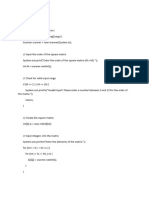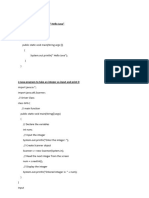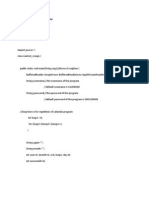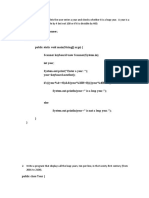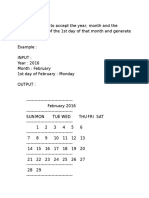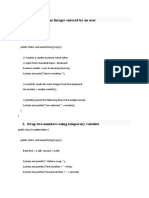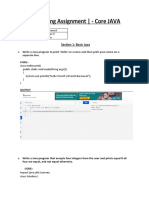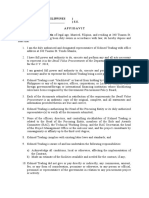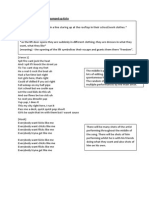0% found this document useful (0 votes)
30 views13 pagesJava Progs
The document contains 7 programming problems to demonstrate various Java concepts like operators precedence and associativity, date validation, pattern printing, Fibonacci series, multiplication tables, class and objects, and static members.
Uploaded by
TANMAY BHARGAVACopyright
© © All Rights Reserved
We take content rights seriously. If you suspect this is your content, claim it here.
Available Formats
Download as PDF, TXT or read online on Scribd
0% found this document useful (0 votes)
30 views13 pagesJava Progs
The document contains 7 programming problems to demonstrate various Java concepts like operators precedence and associativity, date validation, pattern printing, Fibonacci series, multiplication tables, class and objects, and static members.
Uploaded by
TANMAY BHARGAVACopyright
© © All Rights Reserved
We take content rights seriously. If you suspect this is your content, claim it here.
Available Formats
Download as PDF, TXT or read online on Scribd
/ 13














